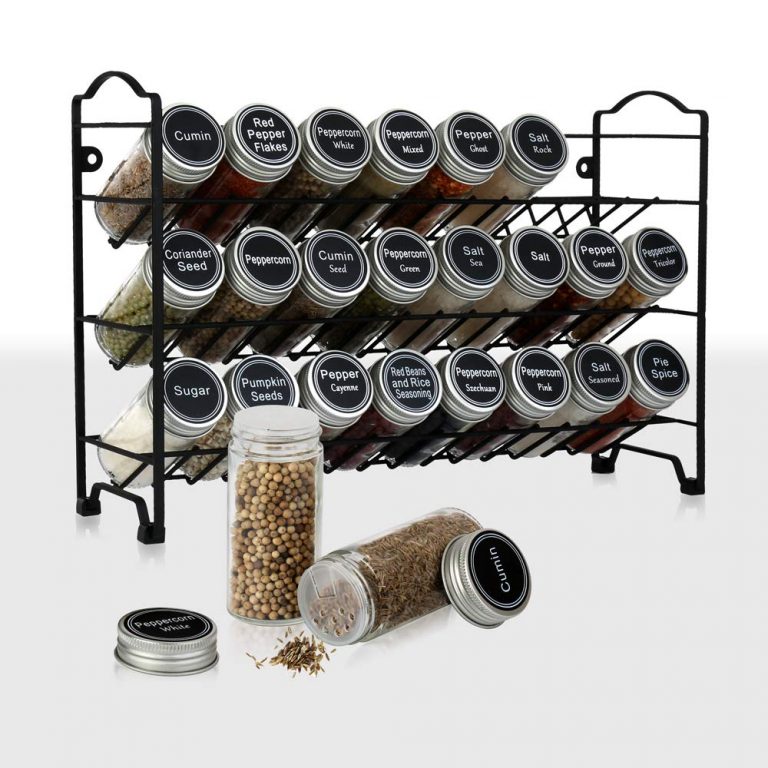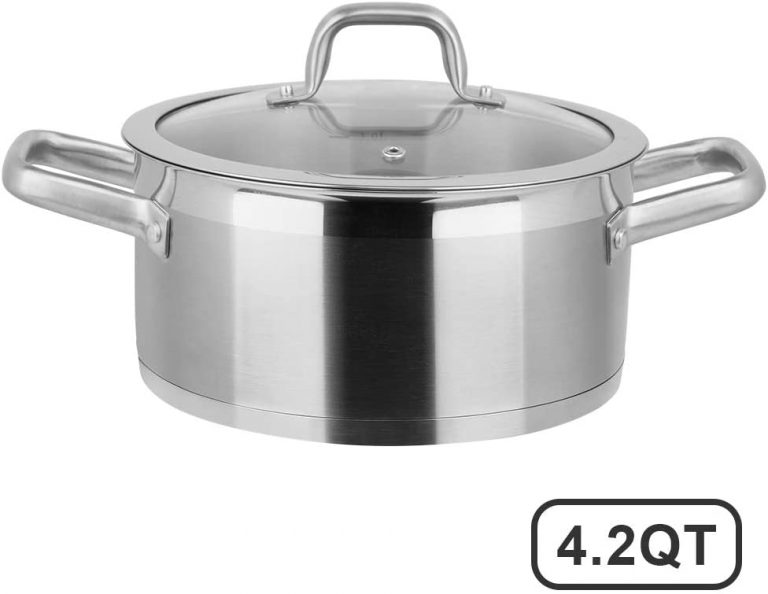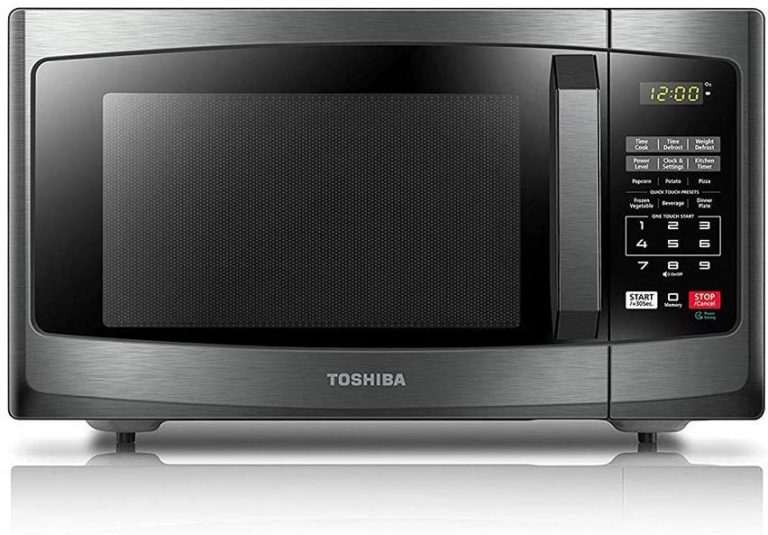How to Fix Microwave Not Heating
Microwaves are notorious for not heating food. It can be dangerous.
When they don’t work, the food you are trying to cook is damaged and ruined. Microwave ovens can cause burns, electric shocks, and fires.
It may be possible that your microwave doesn’t heat foods as it should, but there are a few things you can do to fix it if it is not heating properly.
You should first check to see if the power cord is plugged in and working correctly.
If this test reveals that your microwave still will not heat, you should check and make sure that there is nothing blocking the vent or air sensor on the back of your microwave.
Table of Contents
How to Fix Microwave Not Heating?
Microwave ovens are a form of kitchen appliance which can heat foods quickly and easily. A common problem with a microwave oven is that it has stopped heating up food.
The possible causes for this problem could be malfunctioning or damaged magnetron, a burned-out heating element, or a door that is not shut properly. In this article, we will discuss how to fix microwaves not cook food for you.
To get the microwave to work again, you need to find out what has caused the problem in the first place. For example, if there is no power going into the unit then it will not heat up your food at all.
If there is power going into it but still no heating, then either the magnetron needs replacing or the door must be closed completely while using it.
Microwaves are fairly simple to fix. In order for the oven to heat, there must be continuity through the magnetron tube. The magnetron tube needs winding and needs a small wire or piece of metal inserted around it in order to repair it.
If this cannot be done then the unit can be replaced altogether if it happens often, or some of the components can be replaced individually depending on what is causing the microwave to not work properly and what is causing the hazard to consumers as well.
A few steps will clear what you need to do if your microwave is not heating.
Step 1
The magnetron assembly must be inspected here, which includes locating and removing any loose parts or broken glass tubes, then cleaning off all of those pieces with a damp cloth and disinfectant cleaner.
Once the inside has been cleaned out properly it will look like this. If there are communication problems between heating plates in each position and the magnetron tubes, then they will repair this in a couple of ways.
The first way is by resetting each one that doesn’t communicate properly usually located on the right-hand side above and to the left inside of step 3 Instructions below
Step 2
If it is fixable inspect between all heating plates once more, clean again if necessary, and refit any wires keeping some extra wire strands for future fixes should these broken wires cut through every time one is removed.
Step 3
Finish cleaning by watching over a voltmeter, if each heating plate and magnetron tube turn on when you apply power normally then all of the replacement parts should be replaced to ensure good communication between them, which can appear like this below
The Turntable has run out of time or worked for too long. If there are burnt components located in the middle and outer rings that produce steam it is advisable to replace them here, but if the unit’s operation is severely damaged then a replacement should be considered.
If there are burnt components located in the center of this step and they sometimes produce steam it might not need replacing just clean/replace as necessary with extra wires.
So your power supply can deliver current up through these centers again, which will allow you to reset all parts. If you have managed not to burn out any electrical components during this process previously it should be good enough right now.
But often missed burnt parts will appear more pathetic than before.
Take a look inside each corner of the unit and wipe off any machine oil if there are any visible remnants of this so hot stuff can damage electronics during its journey through these parts, as it does essentially form an unscratched barrier preventing anything from getting in.
Step 4
Now you want to start cleaning again by patching all burnt wires lose with extra components that were used for repair previously but may have been destroyed throughout this process or easily broke because they really didn’t hold up very well at all but work pretty well to patch broken wires here or there while you add
Step 5
This step is actually quite simple and easy up until this point because all the hard stuff had already been done. Now it’s just a matter of reseating any burned components.
In case they were unrepairable before without reapplying parts that will help them get back together again by reassembling as best you can with some help. But mainly this step is to clean up the components and wires that are already gone from the board members so things don’t look out of place.
By cleaning residue off with 99% Isopropyl or Ethanol, please do use a brush directly dipped into it again, let mixture evaporate all over your entire screen if you maybe want rather than using rubbing alcohol on the skin.
Final Step
5- 10 minutes later you will be done with the rest of the repairs, so hide all components that were damaged in your process to steel or burn and put together as many units as possible. You also don’t have to fix every single one right away if it’s still not broken but rather handle a scenario at a time for this goal first.
See also: Best Microwaves for Home Use
How To Fix A Microwave That Isn’t Heating [Another Way]
One easy way to test your microwave is by removing the unit from its surrounding housing. If it continues working, then the problem is inside the outside of the unit.
However, if it ceases to function, then you will want to take a look inside with a screwdriver and find one or more loose wires that may have come into contact when plugged in.
If you unplugged the microwave for a long period of time and it is still not heating, then this would be indicated by whenever to power up without an existing timer that may have triggered when plugged in.
This can give an idea of where the unit’s problem lies within its wiring system.
Checking For Bad Wires: There are special ratcheting pliers (sometimes called side cutters) available at hardware stores or electrical supply shops. You can also use any pair of wire cutters in your toolbox.
Use pliers or a pair of side cutters to gently grasp the two wires and pull them apart from each other, but do not break the insulation that covers both respective electrical components on either end.
Look for any visible bare wire along these two wires after gently lifting them apart and you may see that one or all of these wires is actually broken, worn through, bent, and twisted out of place by electrical interference from nearby appliances such as electric heaters.
If this test doesn’t work due to faulty connections inside the microwave’s wiring system, then try another re-substitute for either a short piece (3 inches) of new wire soldered into each connector where it attaches to each component within the microwave oven.
Sometimes a new wire is needed, but in most cases, you can simply reconnect the existing wires as they are and try your test again. The result of this testing should guide you in deciding what tool or tools to use next to easily remove whichever component on which test finds the problem area.
See also: Best Microwaves for Office Use
Possible Causes of your Microwave not Heating
Microwaves are useful for reheating leftovers and defrosting vegetables, however, if your microwave is not heating then this can be a problem. There are five possible causes:
- If the bottom of your oven or microwave is blocked, debris may prevent heat from reaching your food. Remove the debris and ensure that there is plenty of ventilation space in order to cook efficiently.
- The element under your burner may have blown. If it is not functioning, call an Electrician and have them check to ensure the element is properly connected and cannot be blown again by a brief overload of electricity or even a little bit of food that gets stuck in between the wires on the backside connector terminals inside your microwave oven (a wipe with rubbing alcohol may help dislodge biscuit crumbs).
- The power supply could be faulty: maintain its condition by avoiding placing heavy furniture or large items on top of it and keep a large gap between the oven and cups, dishes, or other objects.
- Test with an appliance tester: most microwaves have a quick test button that could be used to see if this is the issue – turn on the microwave then press the test button you will hear two distinct popping sounds similar to when your ear pops after being in the water for too long. If there are no clicking sounds then call an Electrician to have the turntable(the part you are stood on during cooking) checked.
- Clean your oven properly and make sure it’s neat: vacuum, paper roll under each element and remove any static from cooking utensils by rinsing in hot water then dry completely.
Conclusion
Microwaves are an important part of our daily lives. In fact, the average American uses their microwave at least six times a day! That means that if your microwave is not working properly, you might be missing out on some extra time in the kitchen. Before you take it to the repair shop, try these simple steps to fix your microwave yourself.

Foodie and a passionate cook, I am here to share all of what I know about cooking, kitchen, and food prepping.
Follow me for delicious and healthy recipes.







